|
|
|
|
Minerva Armoured Car
Copper State Models, 1/35 Scale
Reviewed by Brett Green
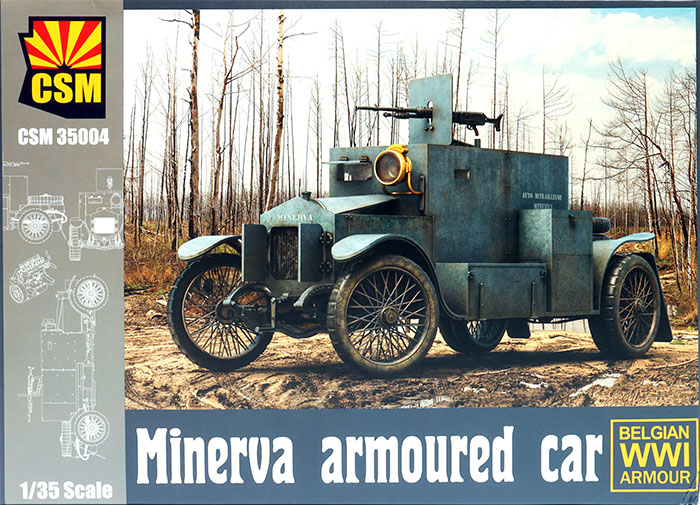
Summary
| Stock Number and Description | Copper State Models Item No. CSM 35004 - Minerva Armoured Car |
| Scale: | 1/35 |
| Media and Contents: | 118 parts in grey plastic; three parts im clear plastic; decals for seven marking options; full colour 40 page instruction booklet. |
| Price: | 37 Euro plus shipping available from Copper State Models' online store £39.99 EU Price (£33.33 Export Price) plus shipping available online from Hannants and specialist hobby retailers worldwide. |
| Review Type: | First Look |
| Advantages: | High level of detail; excellent moulding quality; impressive surface textures including raised rivets and recessed panel lines; thinly moulded integrated plastic wheel spokes; well illustrated and logically laid out instruction booklet. |
| Disadvantages: | Absence of locating pins means that you should spend some extra time test fitting and aligning. |
| Recommendation: | CSM's 1/35 scale Minerva Armoured Car maintains the high plastic standard, quality presentation and luxurious packaging of its WWI aircraft and military predecessors. |
Introduction
The Minerva Armoured Car was a military armoured car expediently developed from Minerva civilian automobiles by Belgium at the start of the First World War.
The initial armoured cars were ad hoc but soon Minerva had created a standard design. American papers were reporting the use of the armoured car by September 1914. The crew was partially exposed to gunfire with the open top. This would prove fatal to Lieutenant Henkart when on September 6, 1914 he was killed by gunfire after the armoured car he was in was caught in a German ambush.
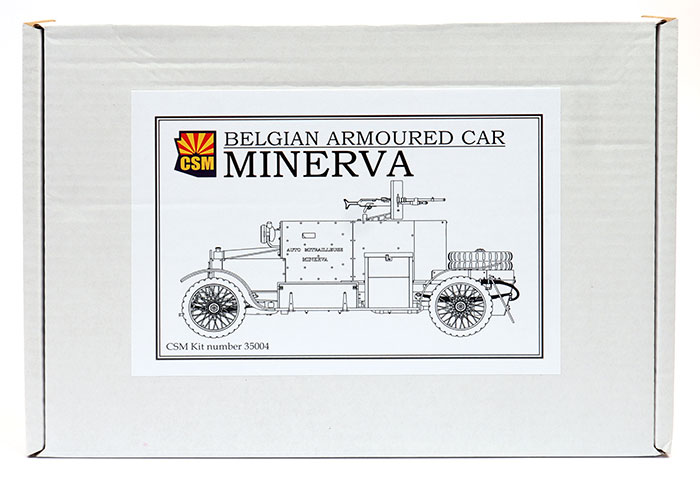
Before the Minerva factory was captured during the German invasion and occupation of Belgium about thirty Minerva armored cars were built.
The Minerva's use in combat in August 1914 made Belgium one of the first nations to employ armoured cars in World War I, though Italy had previously been the first to use armoured cars in a theatre of conflict, in the 1911–1912 Italo-Turkish War.
Also the armoured Canadian Automobile Machine Gun Brigade was formed on August 24, 1914 and close to being assembled by that September.*
FirstLook
Copper State Models' 1/35 scale Minerva Armoured Car comprises 118 parts in grey plastic, three parts in clear plastic, decals for seven marking options and a full colour 40 page instruction booklet.
The model is packed under an attractive cover and inside a stout cardboard box.
In common with Copper State's previous releases, moulding quality is first class and sprue attachment points are fairly narrow.
Surface textures look fantastic too, with a very effective combination of raised rivets, panels, hinges and access points in relief and recessed panel lines.
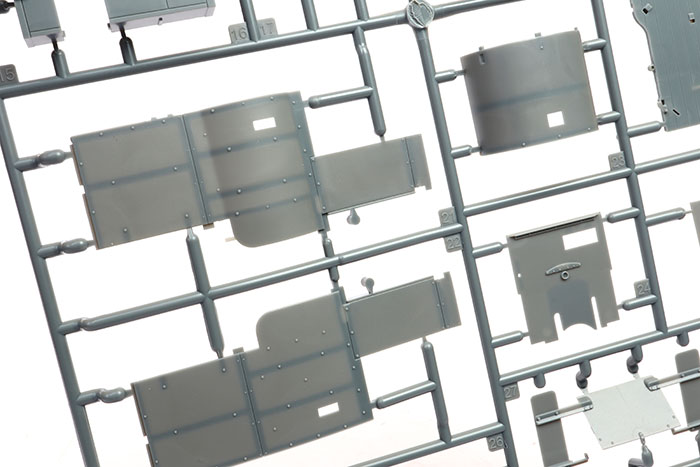
The timber flooring on the fighting compartment floor offers lots of weathering potential too.
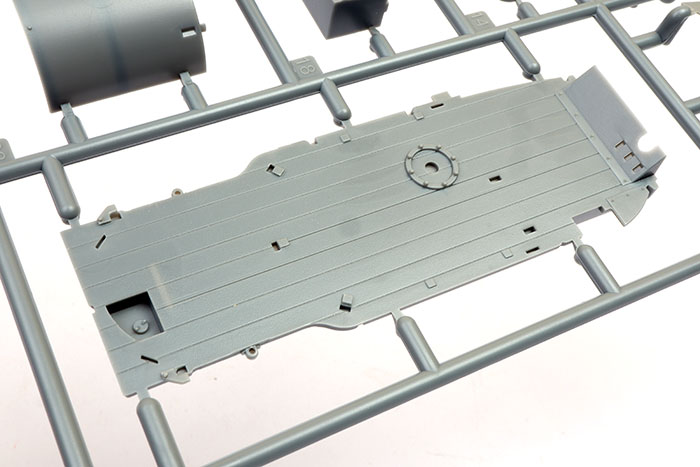
The hull is made up from separate panels - sides, front and rear. You'll want to test fit and carefully align these important elements before committing to glue. Mudguards and running boards are moulded as one piece each.
The main parts do not feature locating pins so you should spend a little extra time test-fitting and aligning before committing to glue.
The running gear is well detailed. Steering is fixed forward.
The wheels are cleverly moulded plastic parts with fine spokes moulded as one with the tyre on one side, and a separate set of spokes for the opposite side.
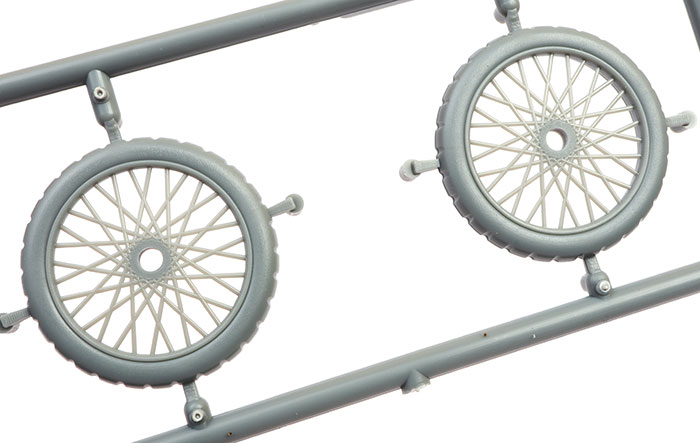
This should look very effective when assembled and painted.
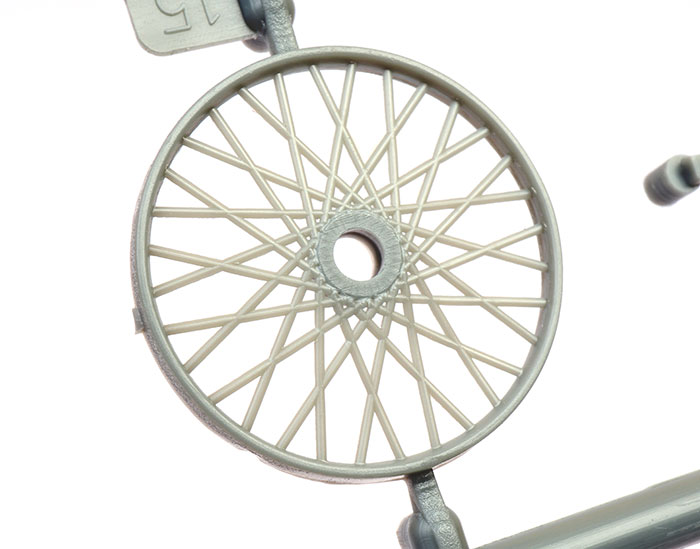
Full engine and drive train detail is supplied. Engine covers and radiator doors are separate parts and may be posed closed, open or off the vehicle altogether.
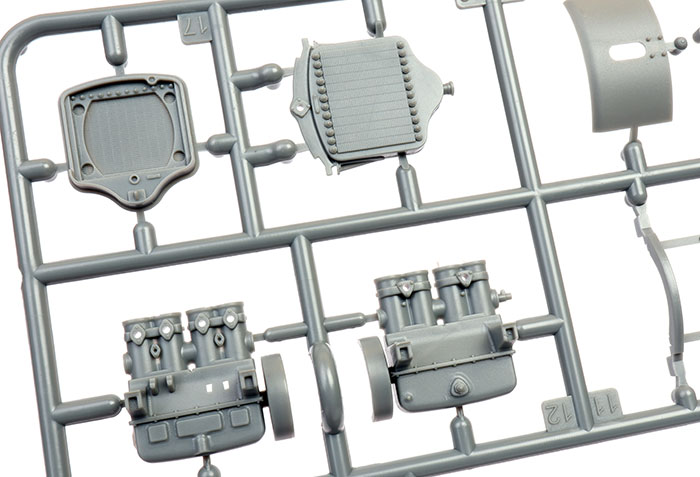
The kit offers a choice of Maxim and Spandau machine guns and different shields, the big brass spotlight, two headlights, alternative bonnets, spare tyres and more.
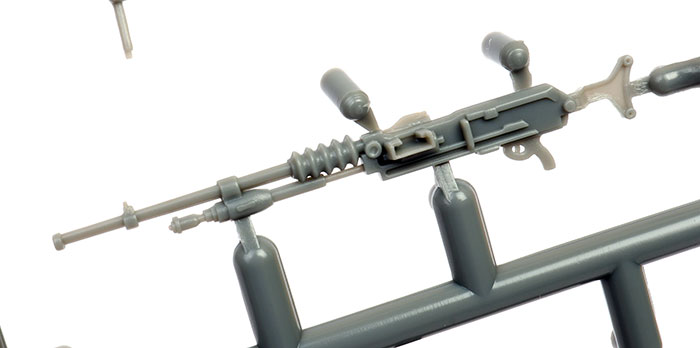
Clear parts are supplied for the headlight and spotlight lenses.
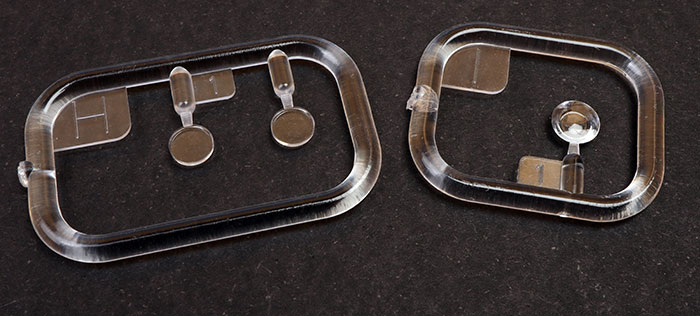
Seven marking options are offered, including overall greys, three-colour camouflage and Iron Crosses on the captured vehicle.
The Cartograf decals are well printed and in register.
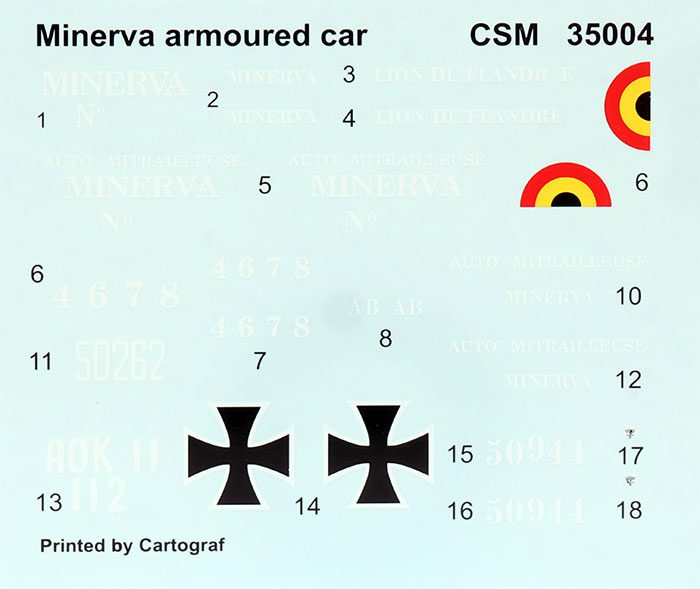
The instructions are noteworthy. They are presented in sepia tones using clear, concise colour keyed illustrations broken down into steps of assembly and painting in the form of an 40 page booklet. In fact, it's almost too big to call a booklet.
A parts guide is included. Colour callouts are made throughout.
There is also a very detailed historical section with contemporary photos and bibliography. There is also a separate section covering a replica Minerva in text and images.
Conclusion
CSM's 1/35 scale Minerva Armoured Car is a beautifully presented model.
This kit maintains the high plastic standard, quality presentation and luxurious packaging of its WWI aircraft and military predecessors.
I built the Copper State Models Lanchester upon its initial release and it presented no problems. I don't expect any here either.
Thanks to Copper State Models for the sample.
* Historical information courtesy of Wikipedia.
Text and Images by Brett Green
Page Created 13 November, 2020
Page Last Updated
13 November, 2020










